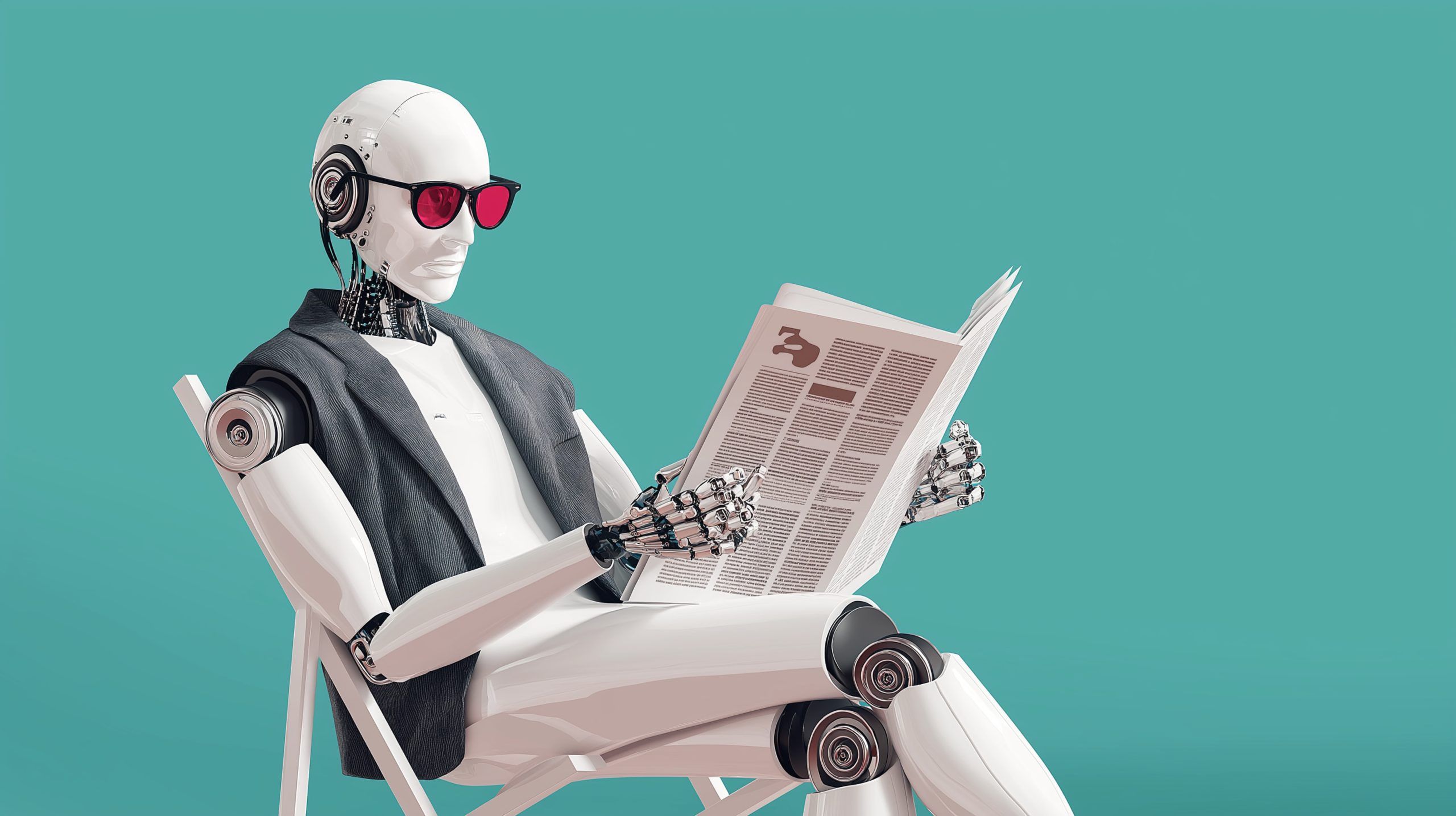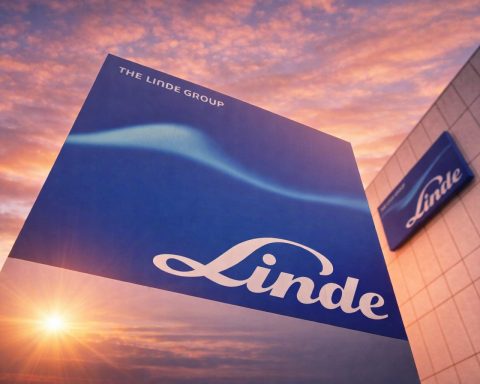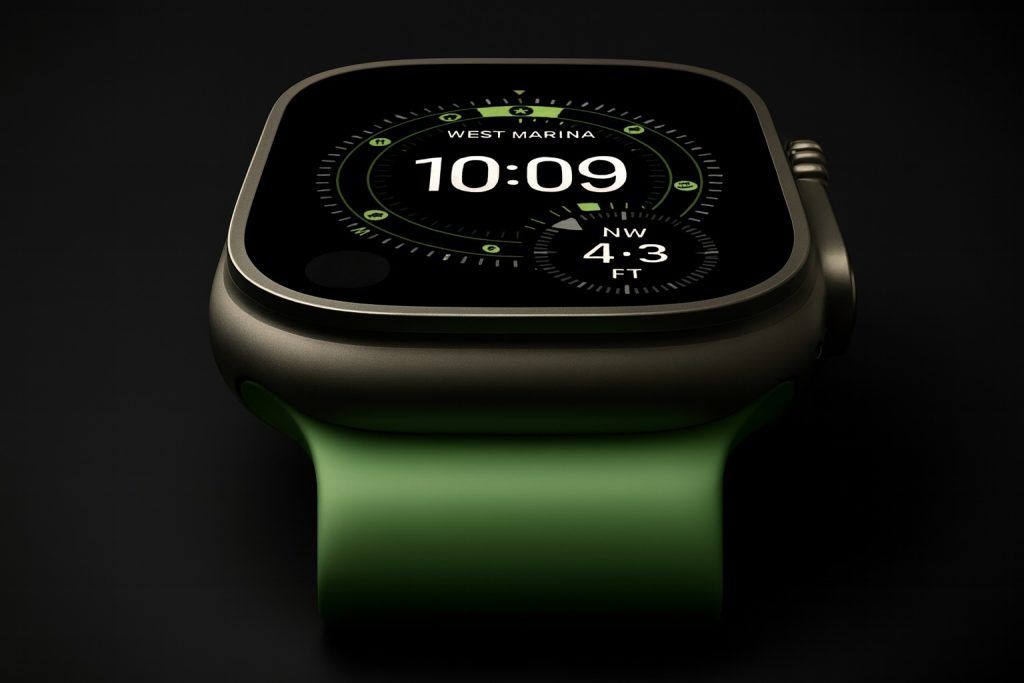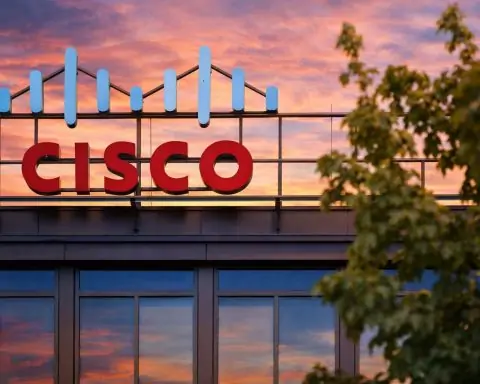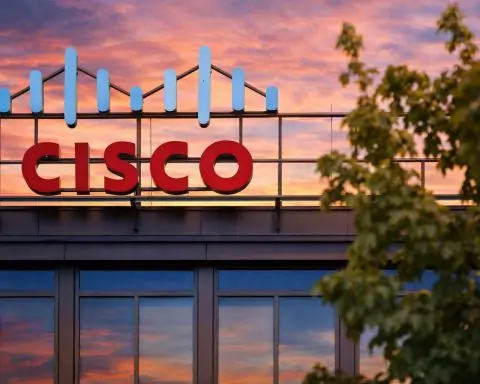Key Facts
- Apple’s “Awe Dropping” Launch: Apple unveiled its iPhone 17 lineup – including a new ultra-thin iPhone Air – and Apple Watch Series 11 with groundbreaking health features [1] [2]. The FDA cleared the Watch’s blood-pressure monitoring, poised to alert up to a million users to hypertension risks [3].
- iOS 26 Rolls Out:Apple iOS 26 officially launched on Sept 15, introducing a dramatic “Liquid Glass” translucent design and enhanced features (live message translation, smarter Maps/Music apps, better accessibility and parental controls) across supported iPhones [4].
- Satellite Internet Snafu:Starlink suffered a brief global outage, with over 43,000 user reports at peak. Service was largely restored by early Sept 15, as the issue count fell below 1,000 [5]. A notice on Starlink’s site confirmed the outage and said the team was investigating [6].
- Major Data Breach in Vietnam: Hackers infiltrated Vietnam’s National Credit Information Center (CIC), which holds sensitive personal and financial data. Officials found “signs of unauthorized access aimed at stealing personal data,” suspecting the notorious ShinyHunters group [7] [8].
- Chip War Escalation:China launched twin probes into U.S. semiconductors – an anti-dumping investigation into certain U.S. analog chips and an inquiry into U.S. “discriminatory” export curbs [9] [10] – just ahead of high-level trade talks. Beijing blasted U.S. tech restrictions as efforts to “curb and suppress China’s development” in high-tech industries [11].
- Tech Trade Truce Efforts: As U.S. and China met in Madrid, President Trump’s administration signaled it will again extend the Sept 17 deadline for TikTok’s sale or shutdown, averting an immediate ban [12]. This marks the fourth reprieve for TikTok’s Chinese owner ByteDance, despite bipartisan pressure in Congress for a forced divestment [13] [14].
- US–UK Tech Alliance: During Trump’s state visit, the U.S. and UK agreed to sign a “world-leading tech partnership” and a major civil nuclear energy deal [15]. Britain announced over $1.6 billion in incoming U.S. tech investments (from firms like Nvidia, PayPal and others) as part of the partnership, which targets critical sectors like semiconductors, telecommunications and quantum tech [16] [17].
- Auto Tech Setbacks: In a blow to electric truck hype, Stellantis axed its forthcoming Ram 1500 REV EV pickup citing faltering demand [18]. Meanwhile, Tesla quietly discontinued the base single-motor Cybertruck – raising the starting price ~$80k – just months post-launch due to minimal orders [19] [20]. “The hype versus the reality just wasn’t there,” observed Ivan Drury, Edmunds’ director of insights, on U.S. consumers’ lukewarm interest in big electric trucks [21].
- Quantum Computing Mega-Merger: U.S.-based IonQ moved closer to acquiring UK’s Oxford Ionics for ~$1.08 billion in a bid to bolster its quantum computing R&D [22]. The UK government approved the deal with conditions, ensuring core operations stay in Britain, as the combined firm aims to advance cutting-edge quantum hardware capabilities [23].
Consumer Tech: Apple’s Big Launches and More
Apple dominated headlines with a slate of new consumer devices launched at its Sept 9 “Awe Dropping” event, with products rolling out through mid-September. The company revealed four new iPhones – the iPhone 17, 17 Pro, 17 Pro Max, and a surprise iPhone Air – its slimmest iPhone ever at just 5.6 mm thick [24]. Despite the sleeker design and upgraded internals (all models sport variants of the new A19 chip), pricing held steady: the base iPhone 17 starts at $799 (now with 256 GB storage), and the Air at $999 [25] [26]. Reviewers noted that “we not only saw the thinnest iPhone ever, but also the longest-lasting iPhone battery ever,” thanks to efficiency gains and larger batteries across the range [27]. All four phones feature high-refresh 120 Hz ProMotion displays (now standard even on non-Pro models) and camera upgrades like a new 18 MP front “Center Stage” camera and dual 48 MP rear cameras on the iPhone 17 [28] [29]. Shipping begins September 19 after brisk pre-orders since Sept 12 [30] [31].
Apple’s wearable lineup also got a boost. The new Apple Watch Series 11 debuted with advanced health-monitoring capabilities – most notably a cuff-less blood pressure monitoring feature. In a significant regulatory win for Apple’s health tech ambitions, the U.S. FDA cleared this blood-pressure detection feature for rollout on recent Apple Watch models [32]. Using an optical sensor and algorithm to passively track blood vessel responses, the Watch can periodically screen for hypertension and alert users to potential issues [33]. Apple says the system, spanning Series 9 through 11 and the Ultra models, could notify about a million users of hypertension early, although it cautions it won’t catch every case [34]. The feature – unveiled at Apple’s event – is slated to launch via software update by the end of September [35] [36]. “Unable to get into our systems by breaking through our digital defences, the attackers did try another route resorting to social engineering and entering through a third party,” he noted [37].
(No other major consumer-tech hardware launches were reported during this period outside Apple’s ecosystem, as the tech world’s attention remained fixed on Cupertino.)
Software Updates: iOS 26 Arrives
September 15 saw the official public release of iOS 26, Apple’s latest operating system for iPhones. Touted as one of Apple’s biggest iOS updates in years, iOS 26 introduces a striking visual overhaul with its new “Liquid Glass” design language [38]. This design applies translucent, glass-like aesthetics to app interfaces and system controls, aiming to create a sense of fluidity and depth. For example, the lock screen now adapts the clock styling to complement the wallpaper, and app icons can appear in tinted or transparent glassy styles for a cohesive look [39] [40]. Under the hood, iOS 26 also expands on-device intelligence and quality-of-life features. A Live Translation feature can automatically translate text in Messages or provide live translated captions during FaceTime calls (even reading them aloud in real time via AirPods) [41] [42]. The update adds smarter context-aware tools – e.g. recognizing content in photos/emails to create calendar events or reminders on the fly – plus an “Image Playground” that lets users generate custom emoji graphics from text prompts [43] [44]. Other notable additions include improved communication safety (spam call screening and unknown message filtering), a new “Hold Assist” that waits on hold in customer-service calls for you [45], and enhanced accessibility and parental control settings [46]. The free update landed on all devices from iPhone 15 onward, with Apple staggering the rollout worldwide on the 15th [47] [48].
Outside the Apple sphere, few non-AI software releases made waves on these dates. One important security patch came from WhatsApp (Meta), which quietly fixed a zero-click exploit that had allowed attackers to compromise iPhones via a malicious video call. The patch had been issued in late August and garnered attention in September security bulletins [49]. Additionally, Samsung pushed out its September firmware update to address an Android kernel vulnerability being exploited in the wild [50]. These updates underscore an ongoing focus on software security, even as AI steals much of the tech spotlight (which we exclude here).
Cybersecurity: Breaches and Hacks (Non-AI)
Vietnam’s Credit Bureau Breach: A significant cyber-incident struck Vietnam, as hackers breached the National Credit Information Center (CIC) – a central credit bureau under the State Bank that stores sensitive personal and financial data on millions of citizens [51]. Vietnam’s cybersecurity agency reported “signs of unauthorized access aimed at stealing personal data,” and authorities are still assessing the scope of the breach [52]. A letter from the CIC, seen by Reuters, attributed the attack to the international hacker collective ShinyHunters, known for targeting major firms like Google and Microsoft [53]. Notably, ShinyHunters has a track record of breaching databases to sell on dark markets. The CIC emphasized that, so far, the incident has not disrupted operations or critical services, and credit reporting functions remain online [54]. Nevertheless, the breach raises concerns about exposure of personal identifiable information and credit histories. Vietnam’s central bank and law enforcement are investigating, and banks have been urged to strengthen security. This marks one of Vietnam’s largest reported data breaches, highlighting the global reach of cybercriminal groups.
North Korean Hackers’ Deepfake Scheme: (While AI-centric attacks are beyond our scope, it’s worth noting how cyber adversaries are leveraging new tools.) According to cybersecurity researchers, a North Korean hacking unit used AI-generated deepfakes to impersonate a contractor and infiltrate a South Korean crypto firm [55]. The hackers reportedly harnessed ChatGPT to draft convincing fake IDs and social engineering scripts. This incident, reported on Sept 14, illustrates the evolving tactics in cyber-espionage – however, because it centrally involves AI (deepfakes created via AI tools), we exclude the detailed discussion per our non-AI focus. The broader takeaway for cybersecurity is clear: threat actors are quick to adopt cutting-edge technologies (AI, deepfakes) to enhance phishing and intrusion campaigns.
Other Cyber Happenings: In the UK, retail giant Marks & Spencer (M&S) provided an update on its costly spring 2025 ransomware attack. M&S confirmed the attackers gained entry by tricking an employee of a third-party IT contractor (social engineering), bypassing M&S’s own defenses [56] [57]. The breach, attributed to the Scattered Spider group, forced M&S to take systems offline for weeks and will cost an estimated £300 million in lost profit. M&S’s CEO stressed that “all companies are vulnerable” and detailed extensive recovery efforts including rebuilding hundreds of servers [58] [59]. Meanwhile, in the U.S., Comcast Xfinity disclosed a data breach on Sept 14, blaming a vulnerability in a third-party software tool (Citrix) which has since been patched [60]. No major outages or ransomware attacks against critical infrastructure were reported during this period, but the onslaught of breaches big and small continued – reinforcing the need for constant vigilance in cybersecurity.
Semiconductors: Chip Probes and New Fabs
Global semiconductor tensions and expansions made news beyond the AI realm. In a bold retaliatory move, China’s Ministry of Commerce launched two investigations targeting U.S. chips on Sept 13, just as trade talks with Washington commenced in Europe [61]. The first is an anti-discrimination probe examining whether U.S. export controls and chip sanctions unfairly target Chinese firms. The second is an anti-dumping investigation into certain U.S.-made analog integrated circuits (the kind used in devices like Wi-Fi routers, hearing aids, and sensors) to determine if they’re being sold below cost in China [62]. The probes explicitly cite U.S. measures – such as sweeping export curbs on advanced semiconductors and chipmaking gear – that Beijing argues “constitute containment and suppression” of China’s tech sector [63]. China’s commerce ministry accused Washington of protectionism and said these practices aim to “curb and suppress China’s development of high-tech industries” including advanced chips [64]. The timing is significant: high-level U.S.-China negotiations were kicking off in Madrid (Sept 14–17) to address trade frictions. Analysts viewed China’s chip probes as leverage in talks. Indeed, trade experts like Wendy Cutler noted that any big concessions (like lifting U.S. chip tariffs or resolving the TikTok dispute) were unlikely in Madrid and would probably be “saved for a potential meeting between Trump and Chinese President Xi later this year” [65]. For now, China’s actions send a message of defiance in the semiconductor standoff, even as its own tech industry grapples with U.S. sanctions.
On the industry front, India took a significant step toward boosting its domestic chipmaking capability. Nextgen Semiconductors, a nascent Indian chip manufacturer, announced plans to raise ₹1,000–1,500 crore (approximately $120–180 million) over the next year to fund a new semiconductor fabrication plant in Gujarat [66] [67]. The company has committed a total ₹8,800 crore (~$1.1 billion) phased investment to build India’s first fully integrated silicon and silicon-carbide power semiconductor fab in the Dholera Special Investment Region [68]. This facility will create a local “wafer-to-power electronics” ecosystem, producing chips for EVs, renewable energy systems, data centers, and industrial electronics [69] [70]. “By combining a world-class facility with phased execution, we are positioning India not only as a consumer but as a global supplier of Si and SiC devices,” said Nextgen Director Raja Manickam, underscoring the project’s strategic goal of self-reliance in critical semiconductors [71]. The fab has secured land and is under review by the Indian Semiconductor Mission, aiming to start construction by April 2026 [72]. Nextgen’s venture comes as India, along with the U.S. and EU, races to localize chip production amid global supply chain shifts. In related news, Germany made its debut at Asia’s premier chip trade show (Semicon Taiwan) that week, unveiling a national pavilion to deepen ties with Taiwanese chipmakers [73] – another sign of countries seeking footholds in the semiconductor value chain.
Telecom & Internet Infrastructure
A notable hiccup occurred in the satellite internet realm. In the early hours of Sept 15, Elon Musk’s Starlink service experienced a widespread outage that affected tens of thousands of users globally [74]. Downdetector, which tracks service disruptions, logged a surge of over 43,000 outage reports from Starlink users in the U.S. and abroad [75]. During the downtime, Starlink’s official status page acknowledged the issue, stating “Starlink is currently experiencing a service outage. Our team is investigating.” [76]. Connectivity was largely restored within a few hours. By 1:15 am ET, the number of users reporting problems had plummeted below 1,000 as service came back online for most customers [77]. SpaceX did not immediately provide technical details about the cause. However, brief Starlink outages have occurred before due to software updates or gateway issues, and this incident appeared to be resolved by morning. The disruption drew attention because Starlink’s satellite broadband network serves over 1.5 million subscribers and is increasingly used in remote areas and critical contexts (from rural communities to battlefield communications) [78]. Fortunately, there were no reports of prolonged downtime. Telecom analysts noted that as reliance on Starlink grows, even short outages highlight the need for backup connectivity in mission-critical deployments. By midday Sept 15, Starlink’s website had removed the outage notice and was operating normally.
In telecom business news, the United States and Britain announced an agreement to collaborate on next-generation telecom infrastructure as part of their new tech partnership [79]. The initiative will focus on jointly developing 6G wireless standards and securing supply chains for networking equipment, according to officials involved. Additionally, Ofcom (the UK telecom regulator) hinted at upcoming spectrum auctions for 6G trials, while the US FCC is set to streamline rules for satellite-to-phone communications – both seen as laying groundwork for the future of connectivity. (These developments were discussed on the sidelines of Trump’s UK visit, though full details are expected in a formal bilateral declaration.)
Automotive Tech: EV Reality Check
In the automotive tech arena, the past weekend underscored the challenging road for electric vehicles – especially the bigger kind. Two high-profile EV pickups hit speed bumps: Stellantis confirmed it is canceling the Ram 1500 REV electric truck before it even reaches full production [80], and Tesla has quietly dropped the entry-level Cybertruck variant just weeks after starting deliveries [81] [82].
Stellantis (the parent of Ram, Chrysler, Jeep, and more) announced on Sept 13 that it would discontinue the Ram 1500 REV project, which had been hyped as Ram’s answer to Ford’s F-150 Lightning. The decision comes amid what Stellantis called “slowing demand” for full-size EV trucks in North America [83]. The company said it is “reassessing its product strategy” for electrification as market data show consumers not buying large electric pickups in expected numbers [84] [85]. This U-turn is significant – Ram’s REV was unveiled earlier in 2025 with claims of class-leading range, but soft pre-orders and high production costs apparently led Stellantis to pull the plug. Industry analysts noted Stellantis was also juggling internal challenges (aging gasoline models and a CEO change) that made an expensive EV gamble riskier [86].
Over at Tesla, the much-anticipated Cybertruck is facing its own reality check. Tesla’s website in mid-September revealed that the cheapest single-motor (RWD) Cybertruck – which had been briefly offered – is no longer available [87]. This effectively raises the base price of Cybertruck from around $60k (for the scrapped model) to about $80k for the dual-motor version, putting it further into luxury price territory [88]. Elon Musk’s team did not make a formal announcement, but observers noticed the RWD option vanished from the configurator. Automotive media report that very few customers opted for the lower-range single-motor truck, especially with a $7,500 EV tax credit set to expire for Tesla at the end of Q3 [89] [90]. The remaining AWD and tri-motor Cybertrucks are far pricier, and Tesla appears to be concentrating on those. This retrenchment aligns with broader EV truck trends – after an initial frenzy of reservations (Tesla once touted 1+ million Cybertruck preorders), actual sales are coming in below expectations. Edmunds analyst Ivan Drury observed that for automakers, “the hype versus the reality just wasn’t there” in the EV truck segment [91]. Full-size pickup buyers have proven intensely loyal to their gas models and wary of EV drawbacks like high prices, limited towing range, and the end of certain tax credits [92] [93]. In fact, Stellantis and Tesla’s moves coincided with Ford’s disclosure that F-150 Lightning sales fell year-over-year in Q2 2025 [94]. All of this suggests the industry may have overestimated demand for big electric trucks – a niche that once looked like the “holy grail of EV adoption” but is now facing a reset in strategy [95] [96].
There were bright spots in EV news as well. In China, SAIC’s MG brand launched the MG4 “Anxin” edition equipped with a semi-solid-state battery, a world-first in production EVs, priced around $14,000 [97] [98]. This advanced battery promises greater energy density and safety, and the MG4’s debut at the Chengdu Auto Show drew 10,000 pre-orders in under 40 minutes [99]. The affordable tech-packed MG4 underscores how Chinese EV makers are innovating rapidly (and was one reason global automakers like Audi and Toyota are now partnering with Chinese firms for EV components [100] [101]). Nonetheless, the middling performance of high-end electric pickups in the West shows that consumer adoption can vary dramatically by segment. Expect automakers to regroup and possibly shift focus to EVs that align with market sweet spots (like crossovers and fleet vans) in the coming months.
Tech Policy & Regulation
U.S.–China Tech Standoff & TikTok Saga: The delicate dance of tech and trade policy continued between the world’s two largest economies. In step with its semiconductor probes (see above), Beijing and Washington held mid-level talks in Madrid (Sept 14–15) to ease trade tensions. While no breakthrough was achieved, one immediate outcome was yet another reprieve for TikTok. As a U.S. law’s deadline loomed for ByteDance to divest TikTok’s American operations by Sept 17, the Trump administration signaled it will extend the deadline once again [102]. This marks the 4th extension since the mandate was enacted (originally January 2025) [103]. A source told Reuters that U.S. officials would push the cutoff further out rather than shutter the hugely popular app, especially since talks with China are ongoing and prospective U.S. buyers are still in play [104] [105]. “I may or may not [extend]… We may let it die, or… it depends, up to China,” President Trump cryptically said when pressed on TikTok’s fate, adding, “I’d like to do it for the kids.” [106] Such rhetoric aside, the expected extension suggests reluctance to disrupt an app used by 170 million Americans [107]. It also provides political cover during negotiations – TikTok was officially on the Madrid agenda, giving Trump officials a pretext to delay enforcement without appearing soft [108]. Lawmakers in Congress, who mandated the sale over national security concerns, are reportedly frustrated by the repeated delays [109] [110]. Wendy Cutler (a former USTR negotiator) noted that a final TikTok deal will likely be rolled into a higher-level US–China agreement later (possibly at the APEC summit in November) [111]. Indeed, she and others predict that thornier issues – from TikTok to tariffs – won’t be resolved until a potential Trump–Xi meeting, with the Madrid talks merely laying groundwork [112]. For now, TikTok remains in limbo, operating as usual in the US under these temporary reprieves.
US–UK Tech Partnership: In London, technology was front and center during President Trump’s state visit. UK Prime Minister Keir Starmer and Trump unveiled plans for a comprehensive UK–US tech partnership agreement, alongside a separate civil nuclear pact [113] [114]. The tech partnership is described by British officials as “a world-leading” initiative to jointly develop and regulate critical technologies [115]. It will focus on areas such as semiconductors, telecommunications, quantum computing, and next-generation networks, and yes, artificial intelligence (despite AI not being our focus here, it is included in the partnership’s scope) [116]. As part of the deal, several U.S. tech companies announced major UK investments. The UK government said it secured £1.25 billion (~$1.7 billion) in new investments, including expansions by Nvidia (which plans to build up AI and chip research in Britain) and commitments from OpenAI and cloud startup CoreWeave to grow their UK presence [117]. (Notably, BlackRock also intends to invest $700 million in UK data centers, according to reports [118].) The high-profile involvement of Nvidia CEO Jensen Huang – who accompanied Trump’s delegation – signals the partnership’s emphasis on semiconductor and AI collaboration [119]. British Tech Secretary Liz Kendall stated, “Cutting-edge technology such as AI and quantum computing will transform our lives,” framing the alliance as a way for the UK and US to shape those transformations together [120]. Beyond tech, the visit aimed to finalize trade issues like steel tariffs, but tech stole the limelight as a realm of deepening ties. Starmer’s spokesperson touted the strengthened “special relationship,” saying “this week we are delivering a step change” in US–UK cooperation [121].
Other Regulatory Updates: In the European Union, regulators turned their attention to Big Tech’s market power (though AI dominated many EU discussions in 2025). On Sept 14, the EU’s Digital Markets Act (DMA) designated several US tech giants as “gatekeepers,” triggering requirements to open up their platforms – an ongoing story from earlier in the month. Meanwhile, Germany announced plans to invest €20 billion in domestic semiconductor production and Japan rolled out incentives to attract chipmakers, reflecting a global policy trend to localize tech manufacturing (complementing India’s efforts noted above). In the realm of privacy, California edged closer to enacting its Age-Appropriate Design Code, a law regulating online services for minors, set to take effect in July 2025 – signaling stricter rules for social media and games used by kids. Finally, on the telecom regulatory front, Canada decided Sept 14 to ban Chinese vendor Huawei from its 5G networks (joining Five Eyes allies in that restriction), illustrating how geopolitical concerns continue to shape tech regulations unrelated to AI.
Tech Business & Industry Moves
Outside of product launches and policy, several notable corporate moves occurred in the tech industry:
- Quantum Computing Consolidation: Maryland-based IonQ, a leader in quantum computing, is moving forward with its ambitious acquisition of UK-based startup Oxford Ionics. Announced in June, the ~$1.08 billion deal received a green light from UK regulators in mid-September [122]. The UK’s Investment Security Unit cleared the takeover with conditions to keep Oxford Ionics’ core R&D in-country [123], alleviating national security concerns. IonQ aims to integrate Oxford Ionics’ novel qubit control technology to enhance its quantum systems [124]. The merger – one of the first big transatlantic combinations in quantum tech – underscores the “booming investor interest” in quantum computing, which, unlike AI, remains a hardware-centric race for more powerful qubit architectures [125]. IonQ’s CEO Niccolo de Masi hailed the deal as a major step in building a commercially viable quantum computer, as the firm adds top Oxford scientists to its team [126]. With the acquisition expected to close by year-end [127], IonQ’s market value surged (its stock jumped to all-time highs on Sept 13 after the UK approval) [128]. This signals optimism that quantum breakthroughs – in areas from drug discovery to encryption – may arrive sooner by pooling expertise.
- Executive Shake-ups: In the UK, online trading platform IG Group announced that its longtime Chairman Mike McTighe will step down by end of 2025 [129]. The move, disclosed Sept 15, comes as IG faces increased competition in fintech; a search for McTighe’s successor is underway, highlighting a broader trend of leadership transitions as traditional finance companies adapt to tech disruptions. Similarly, Tata Technologies, an engineering and IT consultancy arm of India’s Tata Group, said on Sept 13 it acquired a European automotive design firm (Germany’s Es-Tec) to bolster its offerings in EV design and ADAS (advanced driver-assistance systems) [130]. Tata Tech’s CEO noted this will “strengthen our e-mobility and product engineering services for global automakers,” as the firm eyes growth in the electric and autonomous vehicle space [131].
- Media vs Tech Legal Battle: A noteworthy lawsuit was filed (and not AI-related): Penske Media, owner of Rolling Stone and Billboard, sued Google on Sept 14 over the search giant’s use of AI to generate song lyric snippets [132]. Penske alleges Google’s AI summaries infringe its content rights. While this does involve AI, we mention it here only for its legal dimension – part of a growing trend of media companies pushing back on Big Tech’s data use. The suit, in a US federal court, could test how copyright applies to AI-generated content and might force Google to change features of its search results. (This case straddles the AI line but is fundamentally a copyright/regulatory conflict.)
Finally, it’s worth noting that global markets largely shrugged off these tech news items – investors were more focused on macroeconomic signals and the ongoing Hollywood strikes (which ended on Sept 15) than on individual tech stories. Still, the developments between Sept 14–15, 2025 show the tech sector’s dynamism even beyond the headline-grabbing world of AI: new gadgets launching, infrastructure hiccups, hackers breaching data, governments negotiating tech ties, and companies reshuffling to chase the next innovation wave.
Sources: The information in this report is drawn from respected news outlets and official statements. Key sources include Reuters [133] [134], Reuters (via Yahoo Finance) [135], Macworld [136], Mint [137], Reuters [138] [139], Taipei Times (AP) [140], Reuters [141] [142], Electrek [143], and Business Insider [144], among others, as cited throughout the text. Each major development is hyperlinked to its primary source for further reading.
References
1. www.macworld.com, 2. www.reuters.com, 3. www.reuters.com, 4. www.livemint.com, 5. www.reuters.com, 6. www.reuters.com, 7. www.reuters.com, 8. www.reuters.com, 9. www.reuters.com, 10. www.reuters.com, 11. www.reuters.com, 12. www.reuters.com, 13. www.reuters.com, 14. www.taipeitimes.com, 15. www.reuters.com, 16. www.reuters.com, 17. www.reuters.com, 18. www.businessinsider.com, 19. electrek.co, 20. www.ainvest.com, 21. www.businessinsider.com, 22. www.reuters.com, 23. thequantuminsider.com, 24. www.macworld.com, 25. www.macworld.com, 26. www.macworld.com, 27. www.macworld.com, 28. www.macworld.com, 29. www.macworld.com, 30. www.macworld.com, 31. www.macworld.com, 32. www.reuters.com, 33. www.reuters.com, 34. www.reuters.com, 35. www.reuters.com, 36. www.reuters.com, 37. www.reuters.com, 38. www.livemint.com, 39. www.livemint.com, 40. www.livemint.com, 41. www.livemint.com, 42. www.livemint.com, 43. www.livemint.com, 44. www.livemint.com, 45. www.livemint.com, 46. www.livemint.com, 47. www.livemint.com, 48. www.livemint.com, 49. www.theregister.com, 50. www.theregister.com, 51. www.reuters.com, 52. www.reuters.com, 53. www.reuters.com, 54. www.reuters.com, 55. fortune.com, 56. www.reuters.com, 57. www.reuters.com, 58. www.reuters.com, 59. www.reuters.com, 60. apple.news, 61. www.reuters.com, 62. www.reuters.com, 63. www.reuters.com, 64. www.reuters.com, 65. www.taipeitimes.com, 66. www.outlookbusiness.com, 67. www.outlookbusiness.com, 68. www.outlookbusiness.com, 69. www.outlookbusiness.com, 70. www.outlookbusiness.com, 71. www.outlookbusiness.com, 72. www.outlookbusiness.com, 73. www.taipeitimes.com, 74. www.reuters.com, 75. www.reuters.com, 76. www.reuters.com, 77. www.reuters.com, 78. www.reuters.com, 79. www.reuters.com, 80. www.businessinsider.com, 81. electrek.co, 82. www.ainvest.com, 83. www.businessinsider.com, 84. www.businessinsider.com, 85. www.businessinsider.com, 86. www.businessinsider.com, 87. www.teslaoracle.com, 88. www.cybertruckownersclub.com, 89. www.teslaoracle.com, 90. www.businessinsider.com, 91. www.businessinsider.com, 92. www.businessinsider.com, 93. www.businessinsider.com, 94. www.businessinsider.com, 95. www.businessinsider.com, 96. www.businessinsider.com, 97. electrek.co, 98. electrek.co, 99. electrek.co, 100. www.reuters.com, 101. www.reuters.com, 102. www.reuters.com, 103. www.reuters.com, 104. www.reuters.com, 105. www.reuters.com, 106. www.reuters.com, 107. www.reuters.com, 108. www.reuters.com, 109. www.taipeitimes.com, 110. www.reuters.com, 111. www.taipeitimes.com, 112. www.taipeitimes.com, 113. www.reuters.com, 114. www.reuters.com, 115. www.reuters.com, 116. www.reuters.com, 117. www.reuters.com, 118. www.reuters.com, 119. www.reuters.com, 120. www.reuters.com, 121. www.reuters.com, 122. ca.finance.yahoo.com, 123. thequantuminsider.com, 124. www.reuters.com, 125. www.reuters.com, 126. www.reuters.com, 127. www.reuters.com, 128. ca.finance.yahoo.com, 129. www.reuters.com, 130. stocktwits.com, 131. stocktwits.com, 132. www.reuters.com, 133. www.reuters.com, 134. www.reuters.com, 135. ca.finance.yahoo.com, 136. www.macworld.com, 137. www.livemint.com, 138. www.reuters.com, 139. www.reuters.com, 140. www.taipeitimes.com, 141. www.reuters.com, 142. www.reuters.com, 143. electrek.co, 144. www.businessinsider.com
